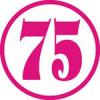
Fashion is a $1.2 trillion global industry, with more than $250 billion spent on fashion in the U.S. alone. And despite predicted “slower than average” employment growth for the 2014-2024 decade, the fashion and apparel industries employ a remarkable 1.9 million people in the U.S. and more than 100 million worldwide. The industry accounts for around two percent of the world’s Gross Domestic Product (GDP), with America’s fashion and apparel industry having a positive impact on regional economies across the country and around the world.
For example, though many apparel products are manufactured overseas, “much of the value that goes into them is generated in the U.S.,” says the United States Congress Joint Economic Committee (JEC). Here, “the focus is on high-fashion, high-value, quick turnaround, and high-margin orders.” Computer-aided design allows designers to “turn concepts into samples, and helps manufacturers move from prototype to finished product on an accelerated timetable.”
New York and Los Angeles are the country’s largest fashion hubs, with more than two-thirds of all fashion designers employed in these states. In New York, America’s fashion capital, the fashion industry employs more than 180,000 people, it pays nearly $11 billion in wages, and it generates nearly $2 billion in tax revenue each year. This includes $532 million in direct visitor spending.
Though New York and LA are fashion industry leaders, “cities such as San Francisco, Nashville, and Columbus are beginning to reap economic benefits” as well, “including high-paying jobs in fashion design.” A new report claims that Nashville has the largest per capita concentration of fashion companies after New York and LA and the Columbus area is now home to major apparel companies such as DSW, Abercrombie & Fitch (New Albany), Express, and L Brands. Massive companies such as Gap and Levi Strauss & Co. are based in San Francisco.
Seattle and Dallas are also cities that have attracted a significant number of brands and fashion designers. Dallas is now being called “a mini-hub of fashion and e-commerce startups” and Seattle is home to Nordstrom and Tommy Bahama.
At present, the top 10 metropolitan areas with the highest employment levels in the fashion and apparel industries are:
1. New York-Jersey-City-White Plains, NY-NJ
2. Los Angeles-Long Beach-Glendale, CA
3. Anaheim-Santa Ana-Irvine, CA
4. Boston-Cambridge-Newton, MA
5. Seattle-Bellevue-Everett, WA
6. Nassau County-Suffolk County, NY
7. Riverside-San Bernardino-Ontario, CA
8. San Diego-Carlsbad, CA
9. Portland-Vancouver-Hillsboro, OR-WA
10. Kansas City-MO-KS
The top 10 highest paying metropolitan areas are:
1. Boston-Cambridge-Newton, MA (average $91,260 annually)
2. New York-Jersey-City-White Plains, NY-NJ ($83,710)
3. Bridgeport-Stamford-Norwalk, CT ($81,260)
4. Oakland-Hayward-Berkeley, CA ($81,000)
5. Oxnard-Thousand Oaks-Ventura, CA ($80,370)
6. Los Angeles-Long Beach-Glendale, CA ($78,920)
7. Newark, NJ-PA ($75,840)
8. Columbus, OH ($74,370)
9. Anaheim-Santa Ana-Irvine, CA ($74,120)
10. Salt Lake City, UT ($69,930)
Fashion designers in San Francisco average $68,310 annually and those in the Nashville-Davidson-Murfreesboro-Franklin, TN metro area average $59,560 annually. The nationwide median annual wage is $65,170. Experienced fashion designers average $82,550-$130,050 annually.
Worth noting is other areas such as research and development (R&D) and marketing are growing. Jobs in these fields “require more education and training,” says JEC, “so they hold the prospects of even higher wages.”
Besides having a large impact on the global economy, the U.S. fashion industry is part of the creative economy. More than 200 schools across the U.S. offer fashion-related programs that prepare students for high-paying jobs in the fashion industry and many others. For example, the motion picture and video industry has the third highest level of employment for fashion designers. Designers working in this industry averaged $89,190 in 2016, making film and video the highest paying industry for this occupation.
Three of the world’s best fashion schools are New York’s Parsons The New School for Design, Pratt Institute, and Fashion Institute of Technology (FIT). Per JEC, Los Angeles is home to 14 private and public undergraduate schools with programs dedicated to apparel design and merchandising. Rhode Island School of Design (RISD) and Columbus College of Art and Design are also well-known for their strong design programs. Prominent fashion schools such as these report more than an 80 percent placement rate for recent graduates.
In conclusion, JEC says, “cities all across the country are seeing positive economic impacts from the fashion industry. As retailers and fashion designers cluster outside the traditional fashion hubs, this can help facilitate innovation in the fashion industry and benefit other industries in those regions as well. Today’s fashion industry looks very different from even 25 years ago. Fashion design schools are arming graduates with the advertising, design, web and other skills needed to compete in the rapidly changing global fashion industry. With numerous high-paying jobs in the industry, the United States should look to extend its leadership in the fashion world.”
Sources
Bauck, Whitney. "Is Nashville the Next American Fashion Capital?" Fashionista. Breaking Media, Inc., 25 Jan. 2017. Web. 01 Apr. 2017.
"How Much Do Fashion Designers Make in Nashville-Davidson--Murfreesboro--Franklin, Tennessee?" Career Trends. GRAPHIQ, n.d. Web. 01 Apr. 2017.
"How much do Fashion Designers make in San Francisco-Oakland-Hayward, California?" Career Trends. GRAPHIQ, n.d. Web. 01 Apr. 2017.
"Summary: Fashion Designers." U.S. Bureau of Labor Statistics. U.S. Bureau of Labor Statistics, 17 Dec. 2015. Web. 01 Apr. 2017.
The Economic Impact of the Fashion Industry (n.d.): n. pag. The United States Congress Joint Economic Committee (JEC). JEC Democratic State, 26 Feb. 2016. Web. 01 Apr. 2017.
"27-1022 Fashion Designers." U.S. Bureau of Labor Statistics. U.S. Bureau of Labor Statistics, 31 Mar. 2017. Web. 01 Apr. 2017.
Strijbos, Bram. "Global Fashion Industry Statistics - International Apparel." Fashionunited. Fashion United Group, n.d. Web. 01 Apr. 2017.





